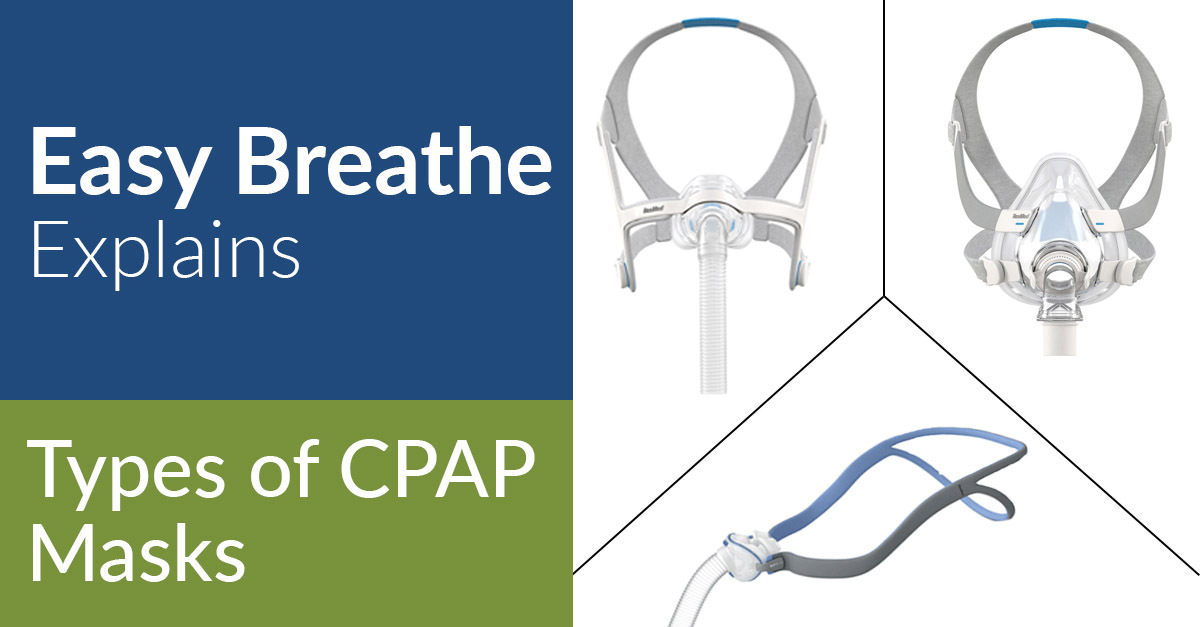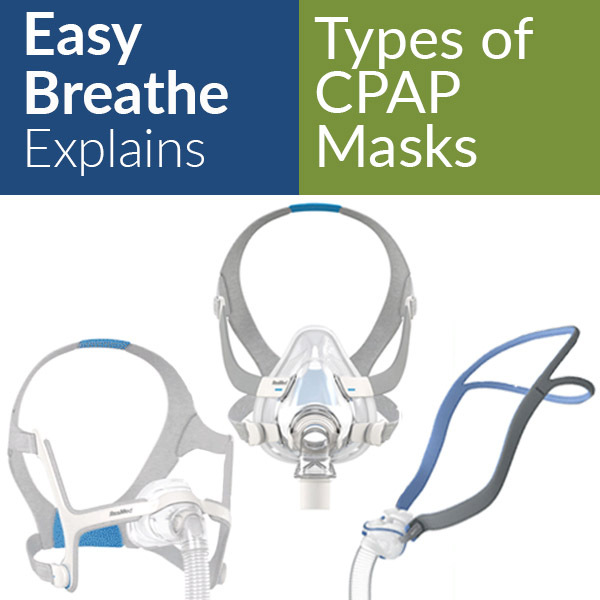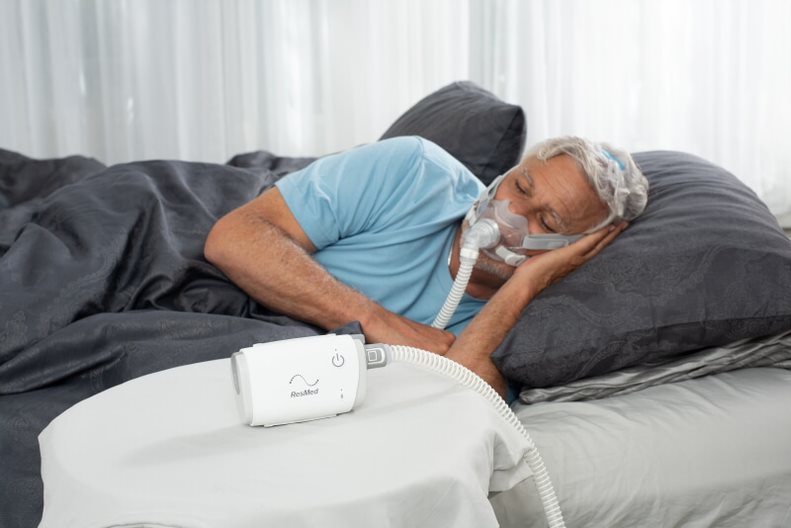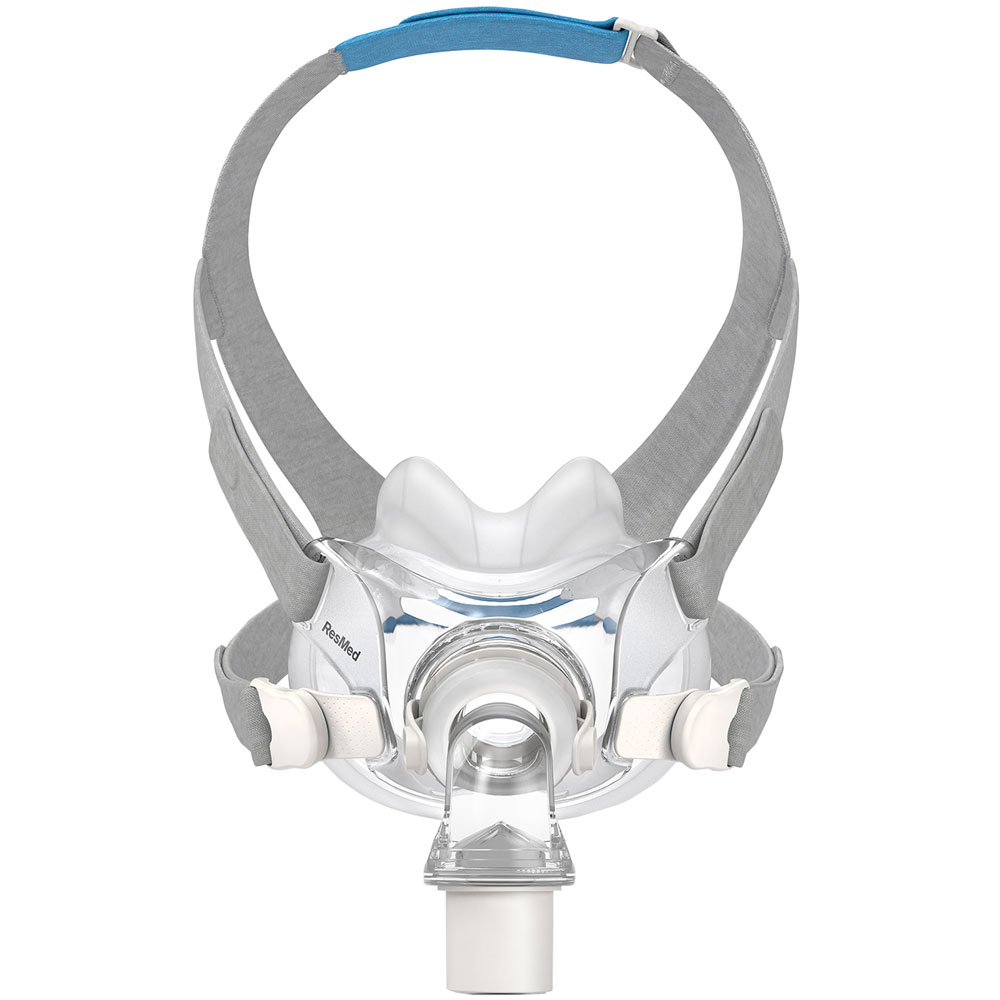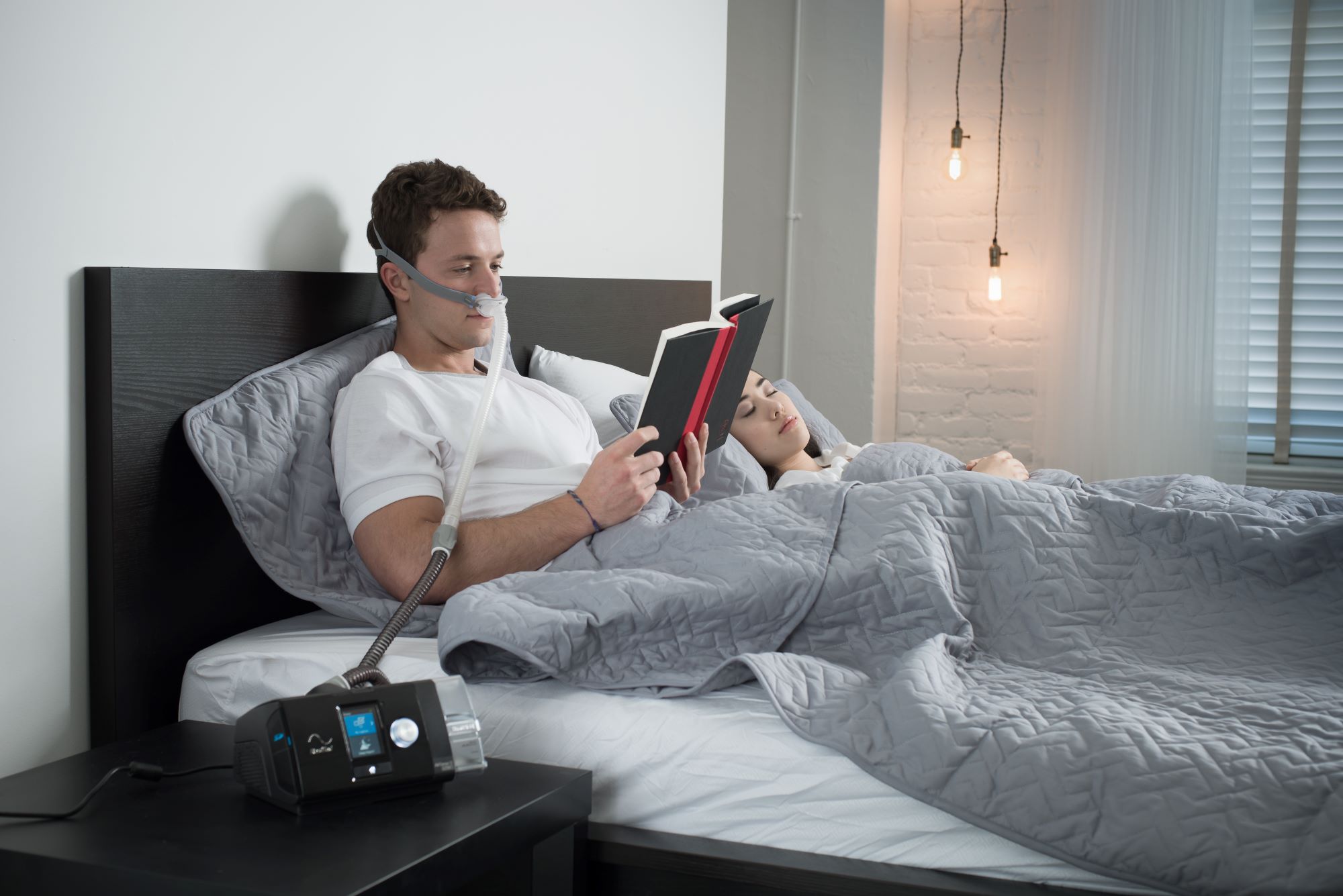Types of CPAP Masks
Whether you’re new to CPAP or a CPAP veteran, it’s easy to get lost in the sea of CPAP masks. There are a wide variety of brands and styles which can make it confusing to determine the best CPAP mask type to use.
In this article, we’ll be giving you a breakdown of each of the different types of masks for CPAP, who they work best for, and what the most popular mask is for each type.
What Are The Different Types of CPAP Masks?
Overall, there are three main types of CPAP masks on the market:
- Full-Face Masks
- Nasal Masks
- Nasal Pillow Masks
Each of these different CPAP masks provides different benefits, and we’ll discuss those below to see which type is best for you.
Full-Face CPAP Masks
What separates Full-Face CPAP Masks from the other two types is that this type of mask covers both your nose and mouth. It’s the perfect CPAP mask type for people who breathe through their mouths at night, since air is prevented from escaping through the mouth.
Full-Face CPAP Masks Are Ideal For:
- Breathing Through Your Mouth: This mask covers both your nose and mouth, making it ideal for people who breathe through the mouth. It’s also great for people who have allergies, congestion, or any other nasal obstructions. Furthermore, full-face masks are compatible with Easy Breathe Sleep Strips, which help provide temporary relief from nasal congestion symptoms.
- Better Seal: Because the Full-Face Mask has a greater surface area in contact with your face, these masks typically provide a better seal. This CPAP mask type ensures air won’t escape through your mouth and you’ll get the CPAP therapy you need.
- Added Stability: Since these masks are larger in size, they also tend to provide greater stability. Some full-face masks even include forehead support pieces for even more support.
Some Drawbacks of Full-Face CPAP Masks Are:
- Bulky Design: Because these masks cover both your nose and mouth, they tend to be larger in size than the other two mask types. So, if you’re looking for a minimalist mask design, this might not be the best way to go.
- More Facial Contact: Since these masks cover a larger surface area, there’s also a larger amount of area in contact with your face. This can sometimes cause more redness and irritation if you’re prone to that. If this is the case, you might want to consider a mask liner, which goes between your mask cushion and your skin to protect your face and make therapy more comfortable.
Our Most Popular Full-Face CPAP Mask: |
Our Most Popular Full-Face Mask: |
|
Nasal CPAP Masks
For a mask to be classified as a “Nasal Mask,” it has to either go over the nose or rest underneath the nose (unlike the full-face mask which covers the nose and mouth). This is the best CPAP mask type and preferred option for people who don’t breathe through the mouth and want to have a smaller mask while sleeping.
Generally, Nasal CPAP Masks Are:
- Less Bulky: These masks are significantly smaller than their full-face counterparts, making it easier for people who may be claustrophobic with larger masks.
- Greater Field of Vision: The minimalist design of many of these masks allows for a more open field of vision before bed, making it easier to read or watch TV.
- Less Facial Contact: This mask type minimizes facial contact, helping to reduce redness and irritation which may occur from the mask rubbing against your skin.
Some Drawbacks of Nasal CPAP Masks Are:
- Less Stable: Since this mask takes up less surface area, they often aren’t as stable as the other two mask types.
- Not the Smallest Option: Although the nasal mask is smaller than the full-face mask, there are still smaller options available (i.e. nasal pillow masks).
Our Most Popular Nasal CPAP Mask:
This year, our most popular nasal mask is the ResMed AirFit N20. This mask has remained a staple for countless CPAP users for good reason. The AirFit N20 features:
|
Our Most Popular Nasal Mask: |
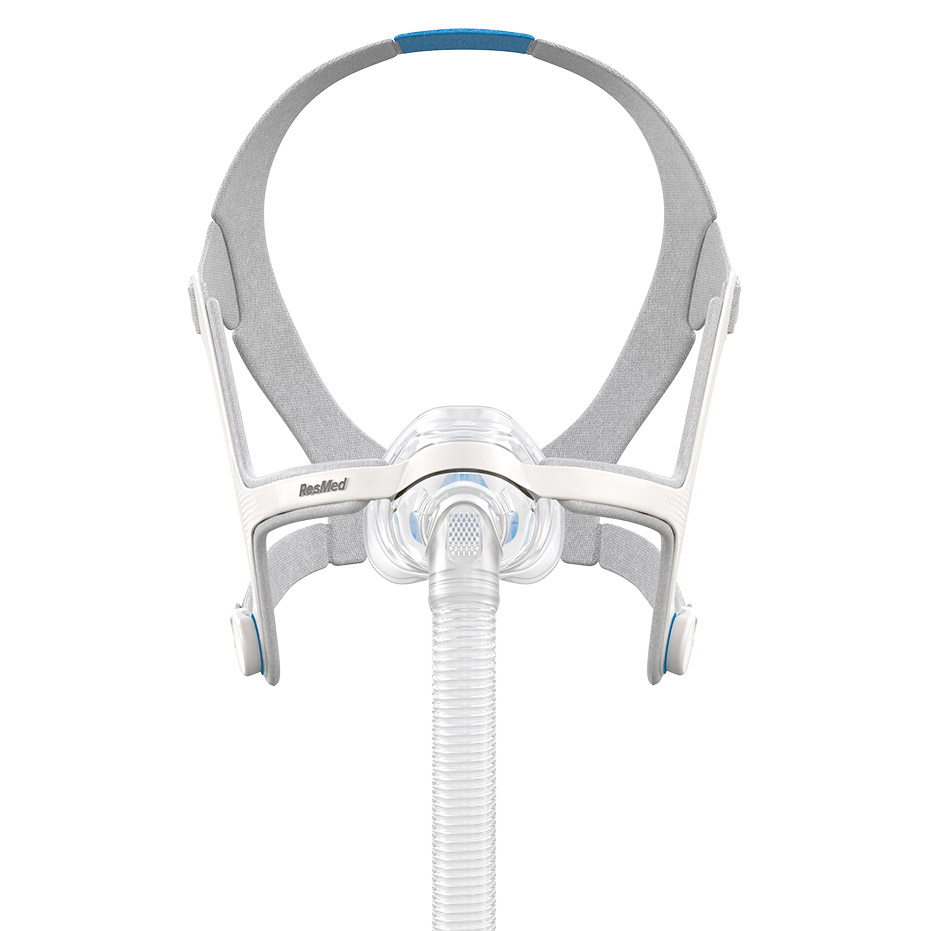 |
Nasal Pillow CPAP Masks
The third type of CPAP mask that’s available is the Nasal Pillow Mask. This mask type is similar to the Nasal Mask, since they both cover the nose only. However, the Pillow Mask has small prongs which enter the nostrils, providing extra stability.
Overall, Nasal Pillow CPAP Masks Are Ideal For:
- Extra Stability: The nasal prongs provide additional stability that you don’t get with traditional nasal masks, giving you a more secure fit.
- Minimalist Design: Of all the mask types on the list, the nasal pillow masks have the most minimalist design, so you barely notice that it’s there while sleeping.
- Limited Facial Contact: Due to its minimalist design, nasal pillow masks have limited facial contact, helping to minimize redness and irritation.
Some Drawbacks of Nasal Pillow CPAP Masks Are:
- Potentially Uncomfortable: Although the nasal prongs provide extra stability, they can be a bit uncomfortable for people who aren’t used to this mask type.
- Doesn’t Work Well With Congestion: Even though many people love the minimalist design of nasal pillow masks, those who have allergies or who are sick may be unable to use this mask if they can’t breathe through their noses. Fortunately, you can use Easy Breathe Sleep Strips with this mask for temporary relief from nasal congestion symptoms.
Our Most Popular Nasal Pillows Mask:
Our most popular nasal pillow mask is the ResMed AirFit P10. This mask has stood the test of time and remains a CPAP user favorite because it is minimalistic and easy to use. Here are some of the other top features of the AirFit P10 mask:
|
 |
Can I Use a Nasal/Nasal Pillow CPAP Mask If I Breathe Through My Mouth?
Yes, but you will need to get a chinstrap! To ensure adequate CPAP therapy, you need to be sure air from your CPAP won’t escape out of your mouth.
If you’re a mouth breather using a nasal or nasal pillow mask, you can use the chinstrap to keep your mouth closed while you sleep, allowing you to maintain your proper pressure levels throughout the night. To learn more, check out our CPAP Chinstrap Buying Guide on our blog.
What If I’m Not Sure Which CPAP Mask is Right for Me?
If you’re still not sure which mask is right for you, take Easy Breathe’s Mask Finder quiz here! This will take into account your unique needs and recommend the best mask type and model for you.
If you’d rather speak to one of our representatives, you can give us a call at (866) 564-2252. You can also chat online with one of our experts at easybreathe.com! Our team is the best in the business at getting CPAP users the right supplies!



